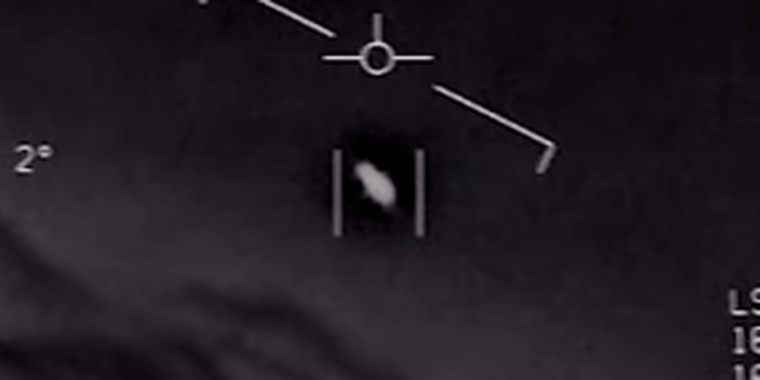Lawmakers pushed the federal government to reveal more information on unidentified aerial phenomena, often called “UAPs” or “UFOs,” as three former military officials testified during a congressional hearing on Wednesday.
The House Oversight subcommittee on National Security, the Border, and Foreign Affairs heard testimony from three witnesses: David Grusch, a former U.S. intelligence official; David Fravor, a former Navy commander; and Ryan Graves, a former Navy pilot. Graves and Fravor both claim to have spotted UAPs. Grusch said he has not personally seen UAPs, but claimed he was informed of a “multi-decade” government UAP retrieval program.
Lawmakers and witnesses at the roughly two-hour-long hearing decried the stigma surrounding UFO reporting, and repeatedly underscored the importance of what they called a bipartisan issue, which has gained traction in recent years. Some lawmakers and witnesses also accused the federal government of unduly withholding key UFO-related information from the public.
Graves told the panel that UAP sightings among commercial and military pilots are both "routine" and "grossly underreported." He added that if the public viewed the video and sensor data he witnesses, "our national conversation would change."
"I urge us to put aside stigma and address the security and safety issue this topic represents," Graves said. "The American people deserve to know what is happening in our skies. It is long overdue."
A growing chorus of lawmakers have accused U.S. officials in recent months of being too secretive and urged the Pentagon to release more UFO-related information to the public.
Earlier this month, Senate Majority Leader Chuck Schumer, D-N.Y., and Sen. Mike Rounds, R-S.D., introduced an amendment to the National Defense Authorization Act that would create a review board charged with declassifying UFO-related records.
Rep. Tim Burchett, R-Tenn., said last week that the committee’s hearing will aim to create the conditions for transparency, and that he expected the witnesses will "speak frankly to the public about their experiences."
“I just want transparency. I just want the truth,” Burchett said.
Separately, Grusch, who said he led Defense Department efforts to analyze reported UAP sightings, accused the Pentagon of covering up a program that attempted to retrieve and reverse engineer UAPs, and claimed that the government has recovered "non-human biologics" from crashed UAPs. He did not cite any evidence to support these allegations, claiming that such information remains classified.
Sue Gough, a Pentagon spokesperson, rejected Grusch’s claims.
The Defense Department "has not discovered any verifiable information to substantiate claims that any programs regarding the possession or reverse-engineering of extraterrestrial materials have existed in the past or exist currently," Gough said in an email.
In a statement ahead of the hearing, Rep. Robert Garcia, the top Democrat on the subcommittee overseeing the hearing, said: “The American people deserve transparency about UAP’s, and Congress should work in a bipartisan way to understand any potential national security implications."
Burchett and other lawmakers on the committee have previously accused defense officials of stonewalling congressional inquiries into UAPs. In an interview earlier this month, Burchett claimed that one of the committee’s previous witnesses will not testify “because of pressure from the Pentagon.”
Gough told NBC News that the Defense Department is "committed to timely and thorough reporting to Congress" on UAPs.
This year, a NASA panel tasked with studying UAP sightings held its first public meeting. The experts said the stigma associated with reporting UAP sightings — as well as the harassment of people who work to investigate them — may be hindering efforts to determine their origins, and they called on the federal government to collect higher quality data.
Sean Kirkpatrick, director of the Defense Department’s All-Domain Anomaly Resolution Office, told the panel in May that most UAP sightings have “mundane” explanations.
Those explanations, experts say, include balloons, drones, optical illusions, or even the blinking lights of a commercial airliner. Some officials and independent experts say they have seen no evidence linking UAPs to alien activity, though they have not ruled out that explanation.
Kirkpatrick said his office has received over 800 UAP reports since 1996, but that just about 2 to 5 percent demonstrate “anomalous characteristics” that require more analysis. He added that “without sufficient data, we are unable to reach defendable conclusions that meet the highest scientific standards we set for resolution.”
